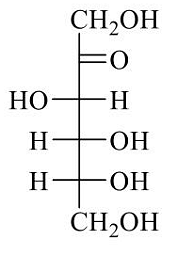The acetolysis product(s) of the given reaction (solvolysis of the benzylic tosylate in AcOH) is(are)

The acetolysis product(s) of the given reaction (solvolysis of the benzylic tosylate in AcOH) is(are) 
Show Hint
Solution and Explanation
In \( \mathrm{AcOH} \), the benzylic tosylate undergoes solvolysis. The departure of \( \mathrm{OTs}^- \) generates a benzylic cation. This benzylic cation is then stabilized by a neighboring group, in this case, the adjacent phenyl ring, which provides anchimeric assistance. This neighboring-group participation shields one face of the cationic center, resulting in a unique intermediate. The cation formed is not planar, as the adjacent phenyl group plays a significant role in stabilizing the cation by forming a bridged phenonium intermediate. This mechanism allows the system to minimize the energetic instability of the benzylic cation.
Step 2: Regio-/stereochemical capture.
The nucleophilic attack by \( \mathrm{AcO}^- \) occurs via an anti opening of the phenonium bridge at the reacting carbon. The anti opening is a key factor here because it results in an inversion of configuration at the substitution center. This means that the attack occurs from the opposite side of the leaving group, similar to an SN2 reaction mechanism. This leads to an overall inversion at the reacting center. Importantly, the other stereocenter, which is not directly involved in the reaction (since its bonds remain unbroken), retains its original configuration. This is a classic feature of reactions involving anti opening and inversion at the center undergoing substitution.
Step 3: Products formed.
As a result of the acetolysis, two diastereomers are formed. Both of these diastereomers exhibit inversion at the reacting center, which occurs due to the attack from the two accessible conformers formed during the anti opening of the phenonium intermediate. Therefore, options (A) and (C) are the correct products because they reflect the inversion of configuration at the reacting center, consistent with the described mechanism. On the other hand, options (B) and (D) depict retention of configuration at the reacting center, which is not favored in this case due to the anchimeric assistance. The neighboring-group participation leads to an anti attack and inversion, thus making options (B) and (D) incorrect.
Final Answer: \( \boxed{\text{Anchimeric assistance by Ph } \Rightarrow \text{ anti attack and inversion at the benzylic center } \Rightarrow \text{ (A) and (C).}} \)
Top Questions on Relative stereochemistry in compounds having more than one stereogenic centre
- Fischer presentation of D-(-)-fructose is given below.

The correct structure of α-L-(+)-fructofuranose is- GATE CY - 2024
- Organic Chemistry
- Relative stereochemistry in compounds having more than one stereogenic centre
- The major products X and Y in the following reaction sequence are

- GATE CY - 2024
- Organic Chemistry
- Relative stereochemistry in compounds having more than one stereogenic centre
- The correct statement(s) for decalin is (are)
- GATE CY - 2024
- Organic Chemistry
- Relative stereochemistry in compounds having more than one stereogenic centre
The reaction(s) in which inversion of configuration occur(s) is(are)

- GATE CY - 2023
- Organic Chemistry
- Relative stereochemistry in compounds having more than one stereogenic centre
The topicity relationship of \(H_a\) and \(H_b\) in X, Y and Z (as drawn in the figure) are, respectively,

- GATE CY - 2023
- Organic Chemistry
- Relative stereochemistry in compounds having more than one stereogenic centre
Questions Asked in GATE CY exam
In the given figure, the numbers associated with the rectangle, triangle, and ellipse are 1, 2, and 3, respectively. Which one among the given options is the most appropriate combination of \( P \), \( Q \), and \( R \)?

A regular dodecagon (12-sided regular polygon) is inscribed in a circle of radius \( r \) cm as shown in the figure. The side of the dodecagon is \( d \) cm. All the triangles (numbered 1 to 12 in the figure) are used to form squares of side \( r \) cm, and each numbered triangle is used only once to form a square. The number of squares that can be formed and the number of triangles required to form each square, respectively, are:

The number of patients per shift (X) consulting Dr. Gita in her past 100 shifts is shown in the figure. If the amount she earns is ₹1000(X - 0.2), what is the average amount (in ₹) she has earned per shift in the past 100 shifts?

The Lineweaver-Burk plot for an enzyme obeying the Michaelis-Menten mechanism is given below.

The slope of the line is \(0.36 \times 10^2\) s, and the y-intercept is \(1.20\) mol\(^{-1}\) L s. The value of the Michaelis constant (\(K_M\)) is ________ \( \times 10^{-3} \) mol L\(^{-1}\) (in integer). [Note: \(v\) is the initial rate, and \([S]_0\) is the substrate concentration]
- GATE CY - 2025
- General Chemistry
Consider a Carnot engine with a hot source kept at 500 K. From the hot source, 100 J of energy (heat) is withdrawn at 500 K. The cold sink is kept at 300 K. The efficiency of the Carnot engine is ___________ (rounded off to one decimal place).
- GATE CY - 2025
- General Chemistry